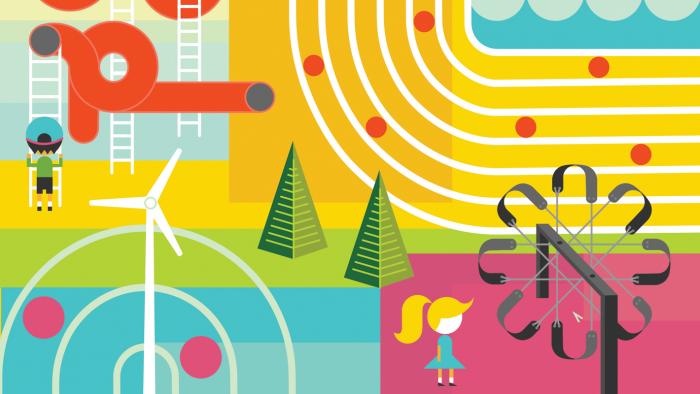BaBar searches for new physics in invisible decays
Updated: 2013-01-30 00:00:00
 On the hunt for physics beyond the Standard Model, scientists recently searched BaBar data for evidence of invisible particles.
Scientists analyzing data from the BaBar experiment, which operated at SLAC between 1999 and 2008, recently published the results of a search for signs of invisible particles: exotic bits of matter that interact so weakly with ordinary stuff they left no mark in the BaBar detector. In the process the researchers established much better limits on possible physics not contained within the Standard Model, which is currently the best explanation for the behavior of matter and the fundamental forces that shape it.
On the hunt for physics beyond the Standard Model, scientists recently searched BaBar data for evidence of invisible particles.
Scientists analyzing data from the BaBar experiment, which operated at SLAC between 1999 and 2008, recently published the results of a search for signs of invisible particles: exotic bits of matter that interact so weakly with ordinary stuff they left no mark in the BaBar detector. In the process the researchers established much better limits on possible physics not contained within the Standard Model, which is currently the best explanation for the behavior of matter and the fundamental forces that shape it.
 The pursuit of dark matter and dark energy s one of the most exciting—and most hallenging—areas of science. Now researchers hink they’e beginning to close in.
If you could use only 5 percent of the alphabet, you’d be stuck with the letter A. Five percent of a complete daily diet is a slice of dry toast.
Yet that’s all we have, or at least all we can perceive, of the place we call home.
Less than 5 percent of the universe is ordinary matter made of quarks, electrons and neutrinos.
The pursuit of dark matter and dark energy s one of the most exciting—and most hallenging—areas of science. Now researchers hink they’e beginning to close in.
If you could use only 5 percent of the alphabet, you’d be stuck with the letter A. Five percent of a complete daily diet is a slice of dry toast.
Yet that’s all we have, or at least all we can perceive, of the place we call home.
Less than 5 percent of the universe is ordinary matter made of quarks, electrons and neutrinos. Physicists announced 30 years ago the discovery of the W boson, a particle that remains an important topic of research.
January 25 marked the 30th anniversary of the discovery of the W boson, a fundamental piece of the Standard Model of particle physics and an important player in the formation of the universe.
Together with the Z boson, the W is responsible for the weak force, one of four fundamental forces that govern the behavior of matter in our universe. Particles of matter interact by exchanging these bosons.
Physicists announced 30 years ago the discovery of the W boson, a particle that remains an important topic of research.
January 25 marked the 30th anniversary of the discovery of the W boson, a fundamental piece of the Standard Model of particle physics and an important player in the formation of the universe.
Together with the Z boson, the W is responsible for the weak force, one of four fundamental forces that govern the behavior of matter in our universe. Particles of matter interact by exchanging these bosons. A brainy playground springs up at Fermilab, offering hands-on education experiences for kids.
Ask a bunch of 10-year-olds this question: Would you rather hear about the journey of a proton through Fermilab’s accelerators, or would you rather be a proton and take that journey yourself?
And now, go visit an ear doctor, since the deafening sound of kids shouting out the second option has no doubt caused some damage. It’s no secret that hands-on education experiences are more fun for kids—it feels like recess, and yet learning is happening.
A brainy playground springs up at Fermilab, offering hands-on education experiences for kids.
Ask a bunch of 10-year-olds this question: Would you rather hear about the journey of a proton through Fermilab’s accelerators, or would you rather be a proton and take that journey yourself?
And now, go visit an ear doctor, since the deafening sound of kids shouting out the second option has no doubt caused some damage. It’s no secret that hands-on education experiences are more fun for kids—it feels like recess, and yet learning is happening.